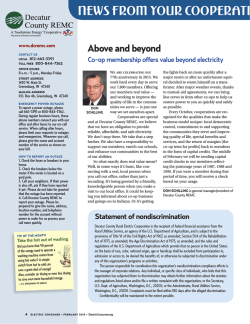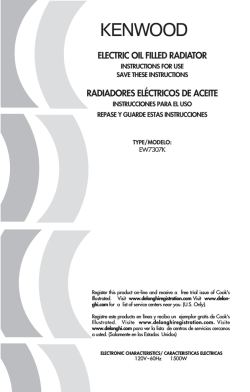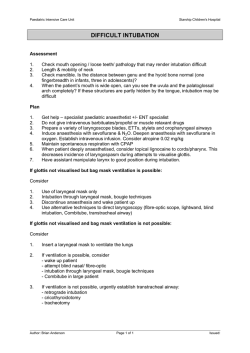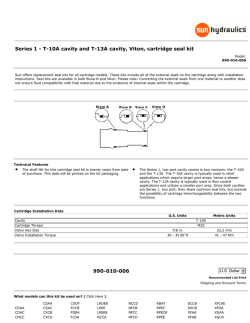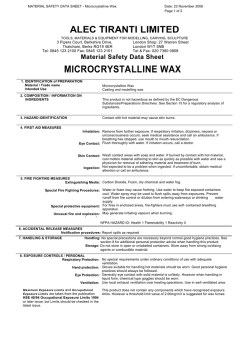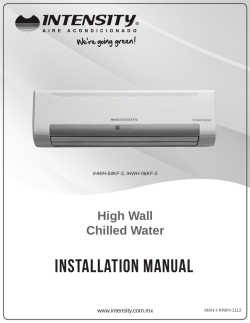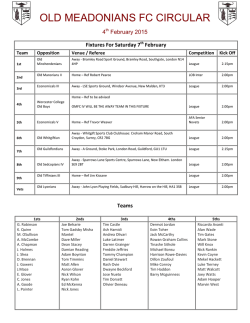
Owners Manual
UNVENTED (VENT-FREE) UNIVERSAL FIREBOX SAFETY INFORMATION AND INSTALLATION MANUAL Shown with optional cabinet mantel, hearth base. CGFB32CA CIRCULATING LOUVERED MODEL WARNING: If the information in this manual is not followed exactly, a fire or explosion may result causing property damage, personal injury or loss of life. Carefully review the instructions supplied with the decorative type unvented room heater for the minimum fireplace size requirement. Do not install an appliance in this firebox unless this firebox meets the minimum dimensions required for the installation. This firebox has been tested and approved by CSA under ANSI Z21.91 for use with any ANSI Z21.11.2 approved gas logs. This appliance may be installed in an aftermarket*, permanently located, manufactured (mobile) home, where not prohibited by local codes. This appliance is only for use with the type of gas indicated on the rating plate. This appliance is not convertible for use with other gases. *Aftermarket: Completion of sale, not for purpose of resale, from the manufacturer Save this manual for future reference. For more information, visit www.desatech.com WARNING: Improper installation, adjustment, alteration, service or maintenance can cause injury or property damage. Refer to this manual for correct installation and operational procedures. For assistance or additional information consult a qualified installer, service agency or the gas supplier. WARNING: For use only with a listed gas-fired unvented decorative room heater. Not to exceed 40,000 Btu/Hr. Do not build a wood fire. State of Massachusetts: The installation must be made by a licensed plumber or gas fitter in the Commonwealth of Massachusetts. Sellers of unvented propane or natural gas-fired supplemental room heaters shall provide to each purchaser a copy of 527 CMR 30 upon sale of the unit. Vent-free gas products are prohibited for bedroom and bathroom installation in the Commonwealth of Massachusetts. TABLE OF CONTENTS Safety Information ............................................... 2 Local Codes ........................................................ 3 Unpacking ........................................................... 3 Product Features ................................................. 3 Product Specifications ......................................... 4 Locating Firebox ................................................. 4 Air For Combustion and Ventilation ..................... 4 Installation ........................................................... 7 Technical Service .............................................. 12 Replacement Parts ............................................ 12 Accessories ....................................................... 12 Parts Centrals .................................................... 13 Illustrated Parts Breakdown and Parts List ....... 14 Warranty Information ...........................Back Cover SAFETY INFORMATION IMPORTANT: Read this owner’s manual carefully and completely before trying to assemble, operate or service this firebox. Improper use of this firebox can cause serious injury or death from burns, fire, explosion, electrical shock or carbon monoxide poisoning. WARNING: Any change to this firebox or its controls can be dangerous. WARNING: Do not allow fans to blow directly into the firebox. Avoid any drafts that alter burner flame patterns. Ceiling fans can create drafts that alter burner flame patterns. Altered burner patterns can cause sooting. 2 WARNING: Do not use a blower insert, hood, heat exchanger insert or other accessory not approved for use with this heater. Due to high temperatures, the firebox should be located out of traffic and away from furniture and draperies. Firebox front and screen become very hot when running firebox. Keep children and adults away from hot surfaces to avoid burns or clothing ignition. Firebox will remain hot for a time after shutdown. Allow surfaces to cool before touching. www.desatech.com 107331-01H SAFETY INFORMATION Continued Do not place clothing or other flammable material on or near firebox. Never place any objects on the firebox or logs. Carefully supervise young children when they are in the room with firebox. You must operate this fireplace with the provided fireplace screen (closed), hood and brick liner in place. Make sure these parts are in place before running firebox. Keep the firebox area clear and free from combustible materials, gasoline and other flammable vapors and liquids. 1. This firebox shall not be installed in a bedroom or bathroom. 2. Never install the firebox • in a recreational vehicle • where curtains, furniture, clothing or other flammable objects are less than 42 inches from the front, top or sides of the firebox • in high traffic areas • in windy or drafty areas 3. Do not use this firebox as a wood-burning fireplace. Use only decorative unvented room heaters (log sets). 4. Do not add extra logs or ornaments such as pine cones, vermiculite or rock wool. Using these added items can cause sooting. 5. Vent-free gas log heaters installed in these fireboxes require fresh air ventilation to run properly. See Air for Combustion and Ventilation, page 4. 6. Do not run firebox • where flammable liquids or vapors are used or stored • under dusty conditions 7. Do not use this firebox to cook food or burn paper or other objects. 8. Turn firebox off and let cool before servicing. Only a qualified service person should service and repair firebox. 9. Operating vent-free log sets in a firebox above elevations of 4,500 feet could cause pilot outage. 107331-01H 10. Do not use the firebox if it has been under water due to the shock hazard that could result with the blower accessary (if installed) in place. 11. Provide adequate clearances around air openings. LOCAL CODES Install and use fireplace with care. Follow all local codes. In the absence of local codes, use the latest edition of The National Fuel Gas Code ANSI Z223.1/ NFPA 54*. Firebox must be electrically grounded in accordance with the National Electrical Code, ANSI/NFPA70 (latest edition). *Available from: American National Standards Institute, Inc. 1430 Broadway New York, NY 10018 National Fire Protection Association, Inc. Batterymarch Park Quincy, MA 02269 UNPACKING 1. With utility knife, cut the carton all the way around above the staples on the bottom tray. Lift the carton off the firebox. Remove packing. 2. Check carton contents for the following: • Screen assembly • Screen support rod • Hardware and parts bag containing the following: - Ownerʼs Operation and Installation Manual - 2 - Black #10 x 3/8" Phillips screws 3. If any items are missing, inform dealer where you bought the firebox. 4. Check all items for any shipping damage. If damaged, promptly inform dealer where you bought firebox. PRODUCT FEATURES OPERATION This firebox is designed to accept unvented decorative gas logs. It requires no outside venting or chimney making installation easy and inexpensive. When used without the blower the firebox requires no electricity making it ideal for emergency backup heat. BLOWER ACCESSORY The CGFB32CA firebox will accept the GA3750A accessory. The variable blower allows you to select the fan speed you desire. The blower circulates heated air from the firebox into the room. Use of blower is optional. www.desatech.com 3 PRODUCT SPECIFICATIONS LOCATING FIREBOX 35 1/16" 3 7/8" 2 3/4" 1 1/4" 1 1/4" 19 3/8" 16 1/4" 31 3/4" 2 3/4" 6 3/4" 6 3/8" Built-in Nailing Flanges Figure 1 - Firebox Front View 2 1/4" 6" 33 11/16" 32 3/16" 12 1/2" 9 3/4" 4 5/8" 2 1/2" Electrical Access Hole Gas Line Access Figure 2 - Firebox Side View 22 1/2" 13 1/4"* 14 1/4" 16 11/16" 19 1/4" Plan where you will install the firebox. This will save time and money later when you install the firebox. Before installation, consider the following: 1. Where the firebox will be located. Allow for wall and ceiling clearances (see Installation Clearances, page 7). 2. Everything needed to complete installation. 3. These models CANNOT be installed in a bedroom or bathroom. 4. Proper air for combustion and ventilation (see Air For Combustion and Ventilation). AIR FOR COMBUSTION AND VENTILATION WARNING: This firebox shall not be installed in a confined space or unusually tight construction unless provisions are provided for adequate combustion and ventilation air. Read the following instructions to insure proper fresh air for this and other fuel-burning appliances in your home. Todayʼs homes are built more energy efficient than ever. New materials, increased insulation and new construction methods help reduce heat loss in homes. Home owners weather strip and caulk around windows and doors to keep the cold air out and the warm air in. During heating months, home owners want their homes as airtight as possible. While it is good to make your home energy efficient, your home needs to breathe. Fresh air must enter your home. All fuel-burning appliances need fresh air for proper combustion and ventilation. Exhaust fans, fireboxes, clothes dryers and fuel burning appliances draw air from the house to operate. You must provide adequate fresh air for these appliances. This will insure proper venting of vented fuel-burning appliances. PROVIDING ADEQUATE VENTILATION 31 5/8" 34 3/8" 35 5/8" *Note: 141/4" is total firebox cavity depth including brick liner. 131/4" is depth of flat floor including brick liner. Figure 3 - Firebox Top View 4 The following are excerpts from National Fuel Gas Code ANSI Z223.1/NFPA 54, Section 5.3, Air for Combustion and Ventilation. All spaces in homes fall into one of the three following ventilation classifications: 1. Unusually Tight Construction 2. Unconfined Space 3. Confined Space www.desatech.com 107331-01H AIR FOR COMBUSTION AND VENTILATION Continued The information on pages 4 through 6 will help you classify your space and provide adequate ventilation. Unusually Tight Construction The air that leaks around doors and windows may provide enough fresh air for combustion and ventilation. However, in buildings of unusually tight construction, you must provide additional fresh air. Unusually tight construction is defined as construction where: a. walls and ceilings exposed to the outside atmosphere have a continuous water vapor retarder with a rating of one perm (6x10-11 kg per pa-sec-m2) or less with openings gasketed or sealed and b. weather stripping has been added on openable windows and doors and c. caulking or sealants are applied to areas such as joints around window and door frames, between sole plates and floors, between wall-ceiling joints, between wall panels, at penetrations for plumbing, electrical and gas lines and at other openings. If your home meets all of the three criteria above, you must provide additional fresh air. See Ventilation Air From Outdoors, page 6. If your home does not meet all of the three criteria above, proceed to Determining Fresh-Air Flow For Firebox Location. Confined Space and Unconfined Space The National Fuel Gas Code ANSI Z223.1/NFPA 54 defines a confined space as a space whose volume is less than 50 cubic feet per 1,000 Btu per hour (4.8 m3 per kw) of the aggregate input rating of all appliances installed in that space and an unconfined space as a space whose volume is not less than 50 cubic feet per 1,000 Btu per hour (4.8 m3 per kw) of the aggregate input rating of all appliances installed in that space. Rooms communicating directly with the space in which the appliances are installed*, through openings not furnished with doors, are considered a part of the unconfined space. * Adjoining rooms are communicating only if there are doorless passageways or ventilation grills between them. 107331-01H DETERMINING FRESH-AIR FLOW FOR HEATER LOCATION Determining if You Have a Confined or Unconfined Space Use this work sheet to determine if you have a confined or unconfined space. Space: Includes the room in which you will install heater plus any adjoining rooms with doorless passageways or ventilation grills between the rooms. 1. 2. 3. 4. Determine the volume of the space (length x width x height). Length x Width x Height =__________cu. ft. (volume of space) Example: Space size 20 ft. (length) x 16 ft. (width) x 8 ft. (ceiling height) = 2560 cu. ft. (volume of space) If additional ventilation to adjoining room is supplied with grills or openings, add the volume of these rooms to the total volume of the space. Multiply the space volume by 20 to determine the maximum Btu/Hr the space can support. __________ (volume of space) x 20 = (Maximum Btu/Hr the space can support) Example: 2560 cu. ft. (volume of space) x 20 = 51,200 (maximum Btu/Hr the space can support) Add the Btu/Hr of all fuel burning appliances in the space. Vent-free heater ___________ Btu/Hr Gas water heater* ___________ Btu/Hr Gas furnace ___________ Btu/Hr Vented gas heater ___________ Btu/Hr Gas fireplace logs ___________ Btu/Hr Other gas appliances* + __________ Btu/Hr Total = __________ Btu/Hr * Do not include direct-vent gas appliances. Direct-vent draws combustion air from the outdoors and vents to the outdoors. Example: 40,000 Btu/Hr Gas water heater __________ 39,000 Btu/Hr Vent-free fireplace + ________ 79,000 Btu/Hr Total = ________ Compare the maximum Btu/Hr the space can support with the actual amount of Btu/Hr used. _________Btu/Hr (maximum the space can support) _________Btu/Hr (actual amount of Btu/Hr used) Example: 51,200 Btu/Hr (maximum the space can support) 79,000 Btu/Hr (actual amount of Btu/Hr used) www.desatech.com 5 AIR FOR COMBUSTION AND VENTILATION Continued The space in the above example is a confined space because the actual Btu/Hr used is more than the maximum Btu/Hr the space can support. You must provide additional fresh air. Your options are as follows: A. Rework worksheet, adding the space of an adjoining room. If the extra space provides an unconfined space, remove door to adjoining room or add ventilation grills between rooms. See Ventilation Air From Inside Building below. B. Vent room directly to the outdoors. See Ventilation Air From Outdoors. C. Install a lower Btu/Hr heater, if lower Btu/Hr size makes room unconfined. If the actual Btu/Hr used is less than the maximum Btu/Hr the space can support, the space is an unconfined space. You will need no additional fresh air ventilation. WARNING: If the area in which the firebox and gas log heater may be operated is smaller than that defined as an unconfined space or if the building is of unusually tight construction, provide adequate combustion and ventilation air by one of the methods described in the National Fuel Gas Code, ANSI Z223.1/NFPA 54 Section 5.3 or applicable local codes. VENTILATION AIR Ventilation Air From Inside Building This fresh air would come from an adjoining unconfined space. When ventilating to an adjoining unconfined space, you must provide two permanent openings: one within 12" of the ceiling and one within 12" of the floor on the wall connecting the two spaces (see options 1 and 2, Figure 4). You can also remove door into adjoining room (see option 3, Figure 4). Follow the National Fuel Gas Code ANSI Z223.1/NFPA 54, Section 5.3, Air for Combustion and Ventilation for required size of ventilation grills or ducts. 6 12" Ventilation Grills Into Adjoining Room, Option 1 Ventilation Grills Into Adjoining Room, Option 2 Or Remove Door into Adjoining Room, Option 3 12" Figure 4 - Ventilation Air from Inside Building Ventilation Air From Outdoors Provide extra fresh air by using ventilation grills or ducts. You must provide two permanent openings: one within 12" of the ceiling and one within 12" of the floor. Connect these items directly to the outdoors or spaces open to the outdoors. These spaces include attics and crawl spaces. Follow the National Fuel Gas Code ANSI Z223.1/NFPA 54, Section 5.3, Air for Combustion and Ventilation for required size of ventilation grills or ducts. IMPORTANT: Do not provide openings for inlet or outlet air into attic if attic has a thermostatcontrolled power vent. Heated air entering the attic will activate the power vent. Outlet Air Outlet Air Ventilated Attic To Attic To Crawl Space Inlet Air Inlet Air Ventilated Crawl Space Figure 5 - Ventilation Air from Outdoors www.desatech.com 107331-01H INSTALLATION NOTICE: This heater is intended for use as supplemental heat. Use this heater along with your primary heating system. Do not install this heater as your primary heat source. If you have a central heating system, you may run system’s circulating blower while using heater. This will help circulate the heat throughout the house. In the event of a power outage, you can use this heater as your primary heat source. WARNING: A qualified service person must install firebox. Follow all local codes. WARNING: Never install the firebox • in a bedroom or bathroom • in a recreational vehicle • where curtains, furniture, clothing or other flammable objects are less than 42 inches from the front, top or sides of the firebox • in high traffic areas IMPORTANT: Vent-free gas log heaters add moisture to the air. Although this is beneficial, installing firebox in rooms without enough ventilation air may cause mildew to form from too much moisture. See Air for Combustion and Ventilation, page 4. IMPORTANT: Make sure the firebox is level. If firebox is not level, log set will not work properly. Note: Your Comfort Glow firebox is designed to be used in zero clearance installations. Wall or framing material can be placed directly against any exterior surface on the rear, sides or top of your firebox, except where standoff spacers are integrally attached. If standoff spacers are attached to your firebox, these spacers can be placed directly against wall or framing materials. 107331-01H Use the dimensions shown for rough openings to create the easiest installation (see Built-In Firebox Installation, page 11). INSTALLATION CLEARANCES WARNING: Maintain the minimum clearances. If you can, provide greater clearances from floor, ceiling and adjoining wall. Carefully follow the instructions below. This will ensure safe installation. Minimum Clearances For Side Combustible Material, Side Wall and Ceiling A. Clearances from the side of the fireplace cabinet to any combustible material and wall should follow diagram in Figure 6. Example: The face of a mantel, bookshelf, etc. is made of combustible material and protrudes 3 1/2" from the wall. This combustible material must be 4" from the side of the fireplace opening (see Figure 6). B. Clearances from the top of the fireplace opening to the ceiling should not be less than 42 inches. Example * *Minimum 16 inches from Side Wall Figure 6 - Minimum Clearance for Combustible to Wall www.desatech.com 7 INSTALLATION Continued Mantel Clearances for Built-In Installation If placing custom mantel above built-in firebox, you must meet the minimum allowable clearance between mantel shelf and top of firebox opening shown in Figure 7. These are the minimum allowable mantel clearances for a safe installation. Use larger clearances wherever possible to minimize the heating of objects and materials placed on the mantel. CAUTION: Close screens before operation of vent-free gas log heater. Do not allow the heater to touch or extend beyond the fireplace screen. If your installation does not meet the minimum clearances in Figure 7, you must: • raise the mantel to an acceptable height, OR • remove the mantel. Note: All vertical measurements are from top of fireplace opening to bottom of mantel 10" shelf. All measurements 8" are in inches. Facing material (above firebox) may be of combustible material, including decorative mantel ornaments. Firebox Wire-mesh Screen NOTICE: A certified electrician must connect electrical wiring to duplex outlet for built-in installation. Follow all local codes. In absence of local codes, follow the National Electrical Code, ANSI/NFPA 70 (Latest Edition). Blower Electrical Outlet Mantel Shelf Side Opening 6" 2 1/2" 13" 16" 19" For CGFB32C Series 21" circulating louvered models only Supplied Firebox Hood Must Be Used at All Times Figure 7 - Minimum Mantel Clearances for Built-In Installation INSTALLING BLOWER ACCESSORY You may install blower accessory GA3750A with conventional installation (below) or with built-in installation (see Built-In Installation of Blower Accessory). To install blower accessory, see instruction sheet included with the kit. 8 Conventional Installation of Blower Accessory 1. Install blower assembly per instruction sheet included in blower accessory kit. 2. Before replacing bottom of firebox, route blower power cord through hole in support bracket in bottom of firebox and through hole in side of firebox to grounded, three-prong 120 volt electrical outlet (see Figure 8). Plug electrical cord into outlet. 3. Replace bottom of firebox. Support Bracket Opening Blower Power Cord Figure 8 - Routing Blower Accessory Power Cord for Conventional Installation Built-In Installation of Blower Accessory 1. Install blower assembly per instruction sheet included. 2. Before replacing bottom of firebox, remove screw holding duplex outlet to the support bracket in the bottom of firebox. Remove duplex outlet. 3. Clamp electrical cable into firebox through smallest hole using strain relief provided. 4. Route wires from electrical box through hole in side of heater and hole in support bracket (see Figure 9, page 9). 5. Connect wires from the electrical box to duplex outlet. Match wire colors to those indicated on duplex outlet. Be sure to connect ground wire. www.desatech.com 107331-01H INSTALLATION 4. Route flexible gas line from equipment shutoff valve into firebox through side. Continued 6. Replace duplex outlet with screw. 7. Plug blower power cord into duplex outlet. 8. Replace bottom of firebox. Cables From Electrical Source Blower Support Bracket Duplex Outlet NOTICE: Most building codes do not permit concealed gas connections. A flexible gas line is recommended to allow accessibility from the firebox. The flexible gas supply line connection to the equipment shutoff valve should be accessible. 5. Attach gas log heater base to firebox bottom with four screws included with base (see Installing Heater Base Assembly in log set ownerʼs manual). 6. Replace firebox bottom and secure with screws. Screw Blower Power Cord Figure 9 - Routing Blower Accessory Power Cord for Built-In Installation Operating the Blower Light your gas appliance with the blower off. After about 15 minutes, turn the blower on to deliver heated air at the top louvers. The blower features a variable control which allows you to select the speed you desire. Note: Periodically check the louvers of the firebox and remove any dust, dirt or other obstructions. INSTALLING LOG HEATER IN FIREBOX CAUTION: Do not pick up log base assembly by burners. This could damage burners. Only handle base by grates. CAUTION: Do not remove the data plates attached to the heater base assembly. The data plates contain important warranty and safety information. 1. Remove four screws holding firebox bottom in place. 2. Lift and remove firebox bottom (see Figure 10). 3. If installing GA3750A blower accessory, see Installing Blower Accessory, page 8. 107331-01H Figure 10 - Removing Firebox Bottom INSTALLING FIREPLACE HOOD NOTICE: The firebox canopy (hood) must not be modified or replaced with a canopy (hood) that may be provided with the unvented decorative room heater. 1. Attach three zinc-colored shoulder screws to back of hood. 2. Insert hood into hood-mounting slots on firebox. 3. Hold hood in place. Insert two black Phillips screws through bottom of hood and tighten. Hood Hood Mounting Slot Shoulder Screw Screw Figure 11 - Installing Fireplace Hood www.desatech.com 9 INSTALLATION Continued INSTALLING FIREPLACE SCREEN 1. Insert each rod through nine rings located at top of screen (see Figure 12). 2. Insert first rod into rear hole in left side of firebox. Fasten rod to rear hole near center of firebox using black shoulder screw. 3. Insert other rod into front hole on right side of firebox and fasten using remaining shoulder screw. Front and Rear Hole Screw Rod Ring Screen Figure 12 - Installing Fireplace Screen FIREBOX INSTALLATION USING OPTIONAL ACCESSORY MANTELS This firebox may be installed using the cabinet mantel and hearth base accessories against a wall in your home. Follow the instructions below to install the firebox in this manner. Note: The instructions below show installation using GMC11F/GMC12U/GMC13F series cabinet mantels and the GC3333F/GC3334U/GC3335F series hearth base accessories. The hearth base accessory shown is optional for this installation. You can install firebox and cabinet mantel directly on the floor. 1. Assemble cabinet mantel, hearth base and perimeter trim (Included with mantel). Assembly instructions are included with each accessory. 2. If using an optional GA3750A blower, install a properly grounded, 120 volt three-prong electrical outlet at firebox location if an outlet is not there. If possible, locate outlet so cabinet mantel will cover it when installed (see Figure 14). 3. Install gas piping to firebox location. This installation includes an approved flexible gas line (if allowed by local codes) and a equipment shutoff valve. The flexible gas line must be the last item installed on the gas piping. See Connecting to Gas Supply in your log set ownerʼs manual. 10 WARNING: A qualified service person must connect firebox to gas supply. Follow all local codes. 4. Place hearth base accessory against wall at installation location. Cut an access hole in hearth top to run flexible gas line to firebox (see Figure 13). Make sure to locate access hole so cabinet mantel will cover it when installed. Note: You can secure base to floor using wood screws. Countersink screw heads and putty over. 5. Route flexible gas line through access hole in hearth base. 6. Center cabinet mantel on hearth base (see Figure 14). Make sure mantel is flush against wall. 7. Break off nailing flanges (see Figure 15, page 11) with hammer or pliers. 8. Place cardboard or other protective material on top of hearth base. Carefully set firebox on protective material, with back of firebox inside mantel opening. Electrical Outlet Hearth Rigid Pipe and Gas Gas Line Shutoff Valve Base Access Hole Figure 13 - Placing Hearth Base Accessory Against Wall Cabinet Mantel Figure 14 - Installing Cabinet Mantel www.desatech.com 107331-01H INSTALLATION Continued Nailing Flanges Figure 15 - Location of Nailing Flanges 3. Carefully set firebox in front of rough opening with back of firebox inside wall opening. IMPORTANT: If installing perimeter trim, see instructions included with perimeter trim accessory. You must install shoulder screws now. 4. If using GA3750A blower accessory, see BuiltIn Installation of Blower Accessory, page 8. 5. Attach flexible gas line to log set. See Connecting to Gas Supply in log set ownerʼs manual. 6. Carefully insert firebox into rough opening. 7. Attach firebox to wall studs using nails or wood screws through holes in nailing flange (see Figure 19). 8. Check all gas connections for leaks. See Checking Gas Connections in log set ownerʼs manual. 9. If using optional perimeter trim, install the trim after final finishing and/or painting of wall. See instructions included with perimeter trim accessory for attaching perimeter trim. 17 3/4" 33" (CGFB32C) 34 1/4" (CGFB32NC) 39 3/8" 27 7/8" 34 3/4" 55 5/8" 34 3/4" Figure 16 - Inserting Firebox Into Cabinet Mantel Figure 17 - Rough Figure 18 - Rough Opening for Opening for Installing Installing in Wall in Corner BUILT-IN FIREBOX INSTALLATION Built-in installation of this firebox involves installing firebox into a framed-in enclosure. This makes the front of firebox flush with wall. Optional perimeter trim is available (see Accessories, page 12) This perimeter trim will extend past sides of firebox approximately 1/2 inch. This will cover rough edges of the wall opening. If installing a mantel above the firebox, you must follow the clearances shown in Figure 7, page 8. Follow the instructions below to install the firebox in this manner. 1. Frame in rough opening. Use dimensions shown in Figure 17 for the rough opening. If installing in a corner, use dimensions shown in Figure 18 for the rough opening. The height is 33", which is the same as the wall opening in Figure 17. 2. Install gas piping to firebox location. This installation includes an approved flexible gas line (if allowed by local codes) after the equipment shutoff valve. The flexible gas line must be the last item installed on the gas piping. See Connecting to Gas Supply in log set ownerʼs manual. 107331-01H Nails or Wood Screws Nailing Flanges Figure 19 - Attaching Firebox to Wall Studs Height Front Width Depth www.desatech.com Actual 32 3/16" 34 5/16" 16 11/16" Framing 33" 35 1/2" 17 3/4" 11 TECHNICAL SERVICE You may have further questions about installation, operation or troubleshooting. If so, contact DESA Heating Productsʼ Technical Service Department at 1-866-672-6040. When calling please have your model and serial numbers of your heater ready. You can also visit DESA Heating Productsʼ Technical Service web site at www.desatech.com. REPLACEMENT PARTS Note: Use only original replacement parts. This will protect your warranty coverage for parts replaced under warranty. PARTS UNDER WARRANTY Contact authorized dealers of this product or Parts Central (see page 13). If they canʼt supply original replacement part(s), call DESA Heating Productsʼ Technical Service Department at 1-866-672-6040. When calling DESA Heating Products, have ready • your name • your address • model and serial numbers of your fireplace • how fireplace was malfunctioning • type of gas used (propane/LP or natural gas) • purchase date Usually, we will ask you to return the part to the factory. PARTS NOT UNDER WARRANTY Contact authorized dealers of this product or Parts Central (see page 13). If they canʼt supply original replacement part(s), call DESA Heating Products at 1-866-672-6040 for referral information. When calling DESA Heating Products, have ready • model number of your fireplace • the replacement part number ACCESSORIES BLOWER ACCESSORY - GA3750A The variable blower allows you to select the desired speed. The blower circulates heated air from the fireplace into the room. PERIMETER TRIM (Not Shown) PT32 - Black PT32B - Brushed Brass PT32P - Platinum PT32PB - Polished Brass Required with all mantel accessories. Optional with built-in installation. Provides a finished appearance covering rough and/or unfinished mantel edges. CABINET MANTEL WITH PERIMETER TRIM GMC11F Series - Walnut Finished GMC13F Series - Oak Finished GMC12U Series - Unfinished Mantel features moldings, fluted sides and medallion. Available in walnut finished or unfinished hardwood, ready to stain or paint. Shown with optional base accessory. Approximate Dimensions (HxWxD): 44" x 57 3/4" x 22 7/8" NOTICE: All accessories may not be available for all fireplace models. Purchase these fireplace accessories from your local dealer. If they can not supply these accessories, call DESA Heating Productsʼ Sales Department at 1-866672-6040 for information. You can also write to the address listed on the back page of this manual. EQUIPMENT SHUTOFF VALVE - GA5010 For all models. Equipment shutoff valve with 1/8" NPT tap. Fits 1/2" NPT pipe. 12 CORNER MANTEL WITH PERIMETER TRIM GMC36F Series - Walnut Finished GMC37U Series - Unfinished GM202F Series - Oak Finished Ideal for space saving installations. Approximate Dimensions (WxHxD): 60 7/8" x 48 3/4" x 34 5/8" www.desatech.com 107331-01H ACCESSORIES PARTS CENTRALS Continued HARDWOOD CORNER HEARTH BASE (Not Shown) G3000F Series - Walnut Finished G3009U Series - Unfinished G3010F Series - Oak Finished The corner hearth base creates a handsome riser for the firebox (cannot be used with cabinet mantel or face mantel). Dimensions (WxHxD): 52 1/2" x 6 1/2" x 26" These Parts Centrals are privately-owned businesses. They have agreed to support our customerʼs needs by providing original replacement parts and accessories. Tools & Equipment Co. 5 Manila Ave Hamden, CT 06514-0322 1-800-397-7553 203-248-7553 Portable Heater Parts 342 N. County Rd. 400 East Valparaiso, IN 46383-9704 219-462-7441 1-888-619-7060 www.portableheaterparts.com [email protected] [email protected] FBD 1349 Adams Street Bowling Green, KY 42103-3414 270-846-1199 1-800-654-8534 Fax: 1-800-846-0090 [email protected] CABINET MANTEL AND BASE ACCESSORY WITH FIREPLACE PERIMETER TRIM GMC8CU Series - Unfinished Birch Veneer, Ready to Stain or Paint GMC10CF Series - Stained Oak Veneer Mantel and base feature moldings, fluted sides and medallion. Mantel Dimensions (H xW xD): 44 3/4" x 53" x 20 3/4" Base Dimensions (H xW xD): 3 3/4" x 48 1/4" x 23 3/4" Master Parts Dist. 1251 Mound Ave. NW Grand Rapids, MI 49504-2672 616-791-0505 1-800-446-1446 www.nbmc.com Washer Equipment Co. 1715 Main Street Kansas City, MO 64108-2195 KS, MO, AR 816-842-3911 www.washerparts.com East Coast Energy 10 East Route 36 W. Long Branch, NJ 07764 732-870-8809 1-800-755-8809 www.njplaza.com/ecep HEARTH BASE - Use with Cabinet Mantel GC3333F- Walnut Finished GC3335F Series - Oak Finished GC3334U - Unfinished The hearth base creates a handsome riser for the fireplace. Approximate Dimensions (HxWxD): 6 1/2" x 58" x 28 9/16" 21st Century 2950 Fretz Valley Road Perkasie, PA 18944-4034 215-795-0400 800-325-4828 Laporte’s Parts & Service 2444 N. 5th Street Hartsville, SC 29550-7704 843-332-0191 Parts Department Cans Unlimited P.O. Box 645 Taylor, SC 29687-0013 803-879-3009 1-800-845-5301 [email protected] 107331-01H www.desatech.com 13 ILLUSTRATED PARTS BREAKDOWN MODEL CGFB32CA 14 15 5 1 2 7 15 15 4 17 3 17 11 16 2 15 15 10 17 13 20 15 12 9 6 19 8 14 18 www.desatech.com 107331-01H PARTS LIST MODEL CGFB32CA This list contains replaceable parts used in your firebox. When ordering parts, follow the instructions listed under Replacement Parts on page 13 of this manual. KEY NO. PART NUMBER DESCRIPTION 1 2 3 4 5 6 7 8 9 10 11 12 13 14 15 16 17 18 19 20 101872-03 101889-01 101929-04 101932-04 103207-01 103208-01 *** 103297-01 M12461-2 103773-05CK *** 103809-01 101348-01 101357-01 M11084-26 103771-01 098304-01 103769-01 099230-02 103217-01CK Firebox Top Firebrick Retainer Rear Firebrick Side Firebrick Outer Casing Outer Shell Base Firebox Wrapper Assembly Screen Screw, Outlet Mounting Front Assembly Firebox Bottom Screen Rod Firebox Support Outer Casing Top Hex Head Screw, #10-16 Strain Relief Fitting Phillips Pan Head Screw, #10 Duplex Outlet Shoulder Screw Hood QTY. 1 3 1 2 1 1 1 2 1 1 1 2 2 1 49 1 13 1 2 1 *** Not a field replaceable part. 107331-01H www.desatech.com 15 WARRANTY INFORMATION KEEP THIS WARRANTY Model Serial No. Date Purchased Always specify model and serial numbers when communicating with the factory. We reserve the right to amend these specifications at any time without notice. The only warranty applicable is our standard written warranty. We make no other warranty, expressed or implied. LIMITED WARRANTY COMFORT GLOW VENT-FREE RESIDENTIAL GAS HEATERS DESA Heating Products warrants this product to be free from defects in materials and components for two (2) years from the date of first purchase, provided that the product has been properly installed, operated and maintained in accordance with all applicable instructions. To make a claim under this warranty the Bill of Sale or cancelled check must be presented. This warranty is extended only to the original retail purchaser. This warranty covers the cost of part(s) required to restore this heater to proper operating condition and an allowance for labor when provided by a DESA Authorized Service Center. Warranty part(s) MUST be obtained through authorized dealers of this product and/or DESA Heating Products who will provide original factory replacement parts. Failure to use original factory replacement parts voids this warranty. The heater MUST be installed by a qualified installer in accordance with all local codes and instructions furnished with the unit. This warranty does not apply to parts that are not in original condition because of normal wear and tear or parts that fail or become damaged as a result of misuse, accidents, lack of proper maintenance or defects caused by improper installation. Travel, diagnostic cost, labor, transportation and any and all such other costs related to repairing a defective heater will be the responsibility of the owner. TO THE FULL EXTENT ALLOWED BY THE LAW OF THE JURISDICTION THAT GOVERNS THE SALE OF THE PRODUCT; THIS EXPRESS WARRANTY EXCLUDES ANY AND ALL OTHER EXPRESSED WARRANTIES AND LIMITS THE DURATION OF ANY AND ALL IMPLIED WARRANTIES, INCLUDING WARRANTIES OF MERCHANTABILITY AND FITNESS FOR A PARTICULAR PURPOSE TO TWO (2) YEARS ON ALL COMPONENTS FROM THE DATE OF FIRST PURCHASE; AND DESA HEATING PRODUCTSʼ LIABILITY IS HEREBY LIMITED TO THE PURCHASE PRICE OF THE PRODUCT AND DESA HEATING PRODUCTS SHALL NOT BE LIABLE FOR ANY OTHER DAMAGES WHATSOEVER INCLUDING INDIRECT, INCIDENTAL OR CONSEQUENTIAL DAMAGES. Some states do not allow a limitation on how long an implied warranty lasts or an exclusion or limitation of incidental or consequential damages, so the above limitation on implied warranties or exclusion or limitation on damages may not apply to you. This warranty gives you specific legal rights and you may also have other rights that vary from state to state. For information about this warranty write: 2701 Industrial Drive P.O. Box 90004 Bowling Green, KY 42102-9004 www.desatech.com 107331 01 NOT A UPC 107331-01 Rev. H 11/04
© Copyright 2025
